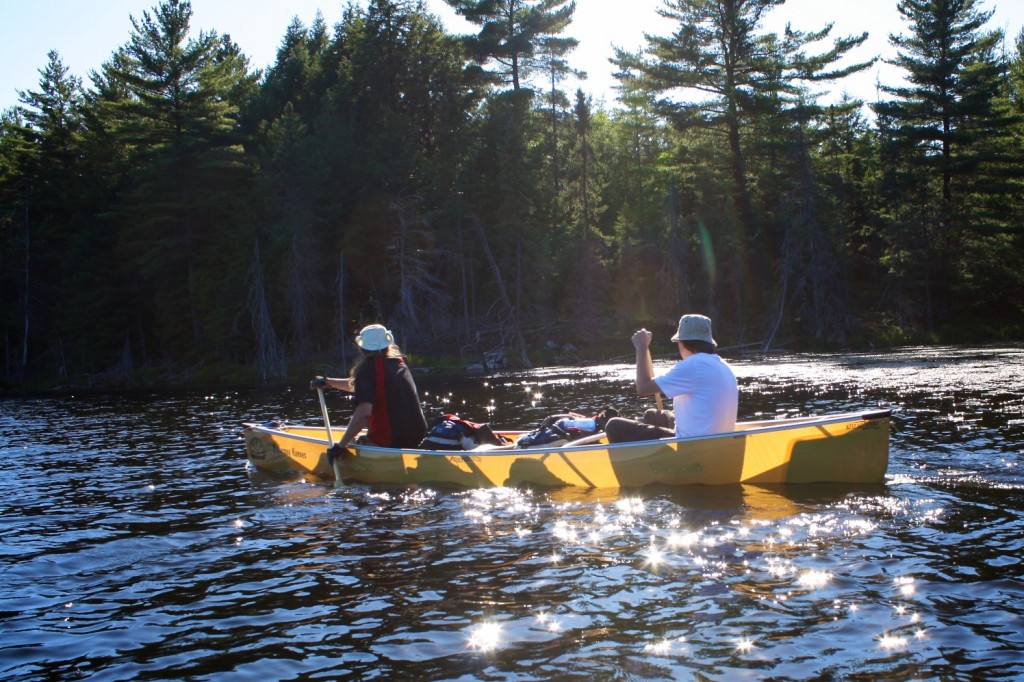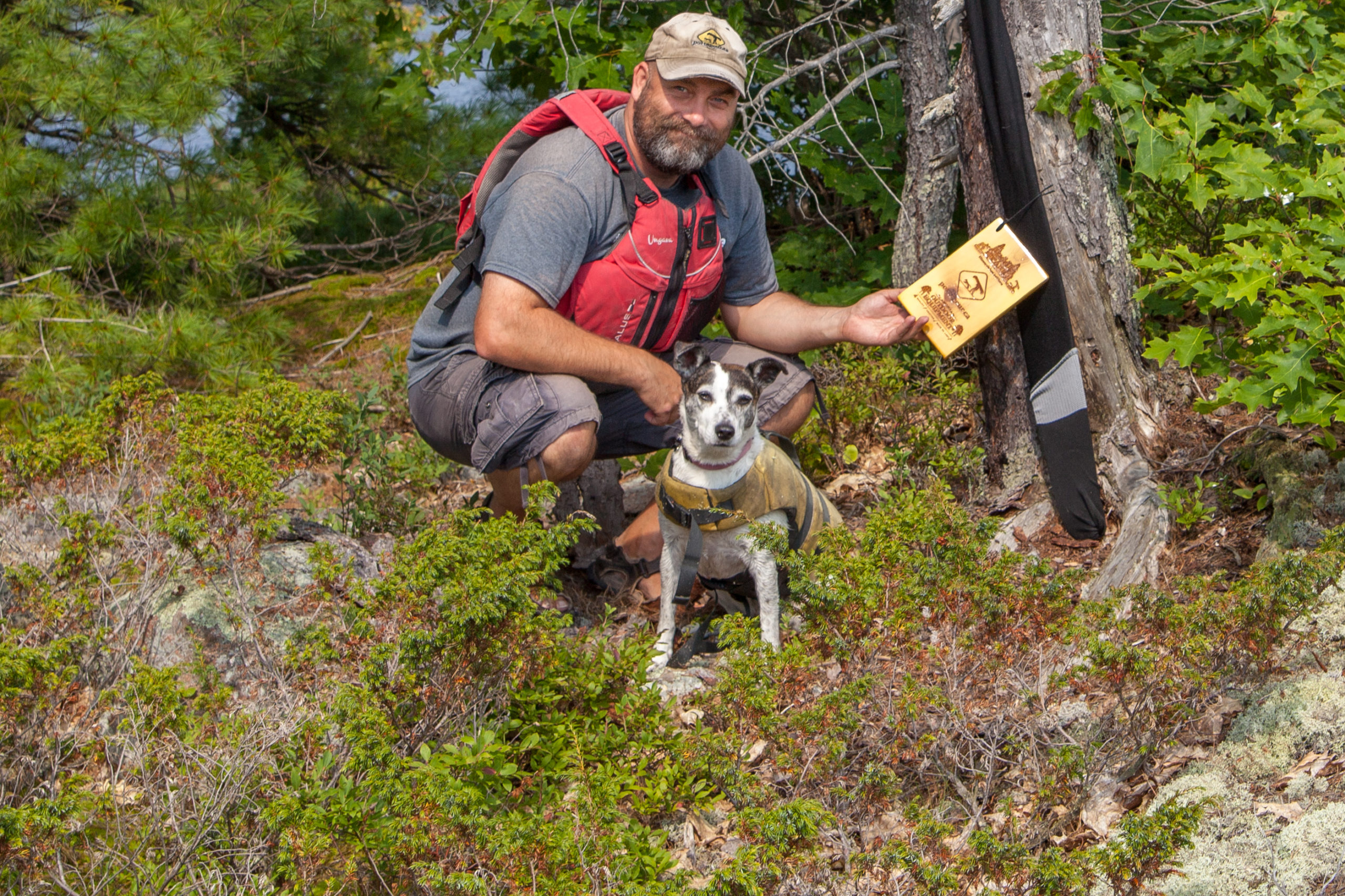Wandering Around Out There With A Canoe On My Head
Wandering Around Out There With A Canoe On My Head

Things to consider when planning your route:
Portages will slow you down. Walking is generally slower than paddling, but it’s even slower when you’re hiking up a hill with your canoe and all your gear on your back. Worse, portages can require you to travel their distances up to three times (once carrying the gear, once to go back, then again with the canoe). Hardcore types will do it in one trip, and others will consider the 1 and a half method. However, if you’re group is small or not in super physical shape – or just not in any hurry or not needing to prove anything – just do it in two trips. The walk back is a good chance to rest, grab a snack on the walk and check out some of the scenery. Some of the best pictures are taken of the things that require you to portage (waterfalls, rapids etc.).
Hug the coast and respect the wind. Traveling over large lakes can be very dangerous, and you have to count on them being windy. You should never cross the middle of a big lake in a canoe, no matter how much time it saves you or how good the weather looks at the moment. When you plan your route, plan to hug one of the coasts – the best being the one that protects you from the wind – and make sure to include that as part of your overall length calculation. Also try and give yourself a little more time in case the wind is against you.
Ensure a buffer for rest and obstacles. Rest often, and plan for it. Mistakes and injuries are made when we’re tired, and you’ll be really slowed down with an injury or broken equipment or even being lost. In the spirit of the tortoise and the hare, you’ll find that you can go longer and farther, maintaining your speed, if you pace out your effort and take the time to recharge.
Consider giving yourself a buffer on the last day. You may find yourself worn down by the last day of the trip and appreciate a slower pace or shorter day, but more importantly, you’ll have an margin or error in case something stalls your momentum along your route. (Ever been trapped on a river by a moose who won’t move? There’s nothing you can do but keep your distance and wait.)
Manage ambition and expectations. Be realistic about how you want your trip to go. Are you going to want to challenge yourself the whole trip with no chance of losing enthusiasm? What about the rest of the group? Do you like traveling the whole day with just enough time to set up camp and sleep, or will you want to chill out at the campsite awhile?
How many people are going? If you’ve got an odd number of paddlers, you’ll have to decide whether someone’s paddling solo. If that happens, one of your canoes will be going slower.
Finally, if you’re still not scared off enough to lower the distance of your trip, consider saving the ambition for the shorter 2-3 day trips, and see how it goes. Longer trips will drain you.

Session expired
Please log in again. The login page will open in a new tab. After logging in you can close it and return to this page.